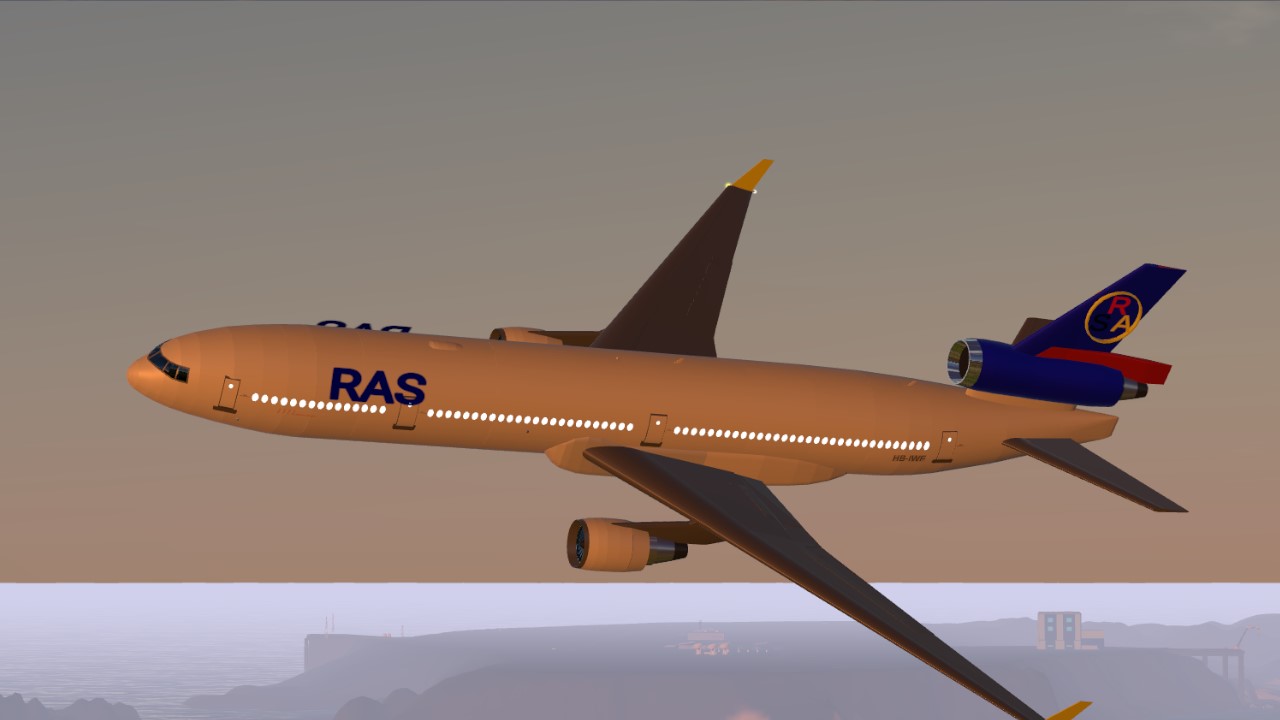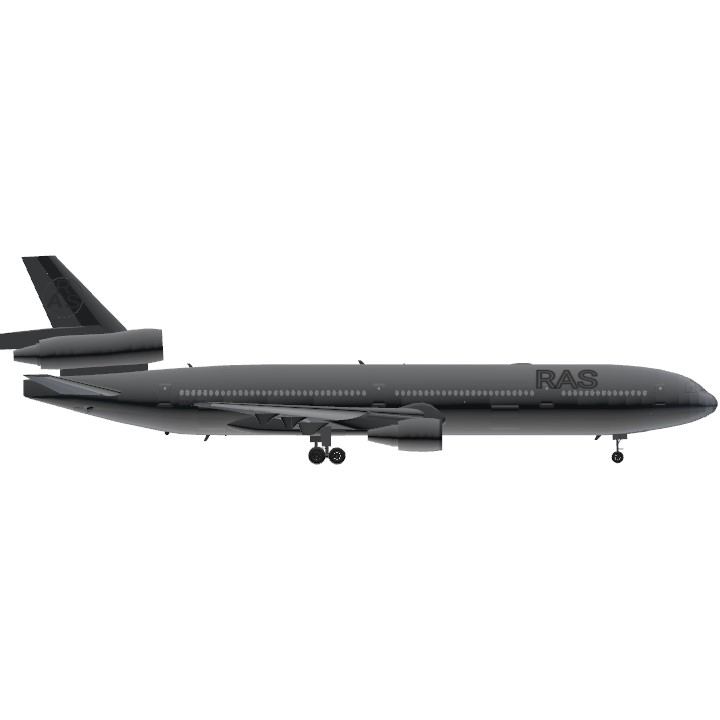the RAS md11 a death machi- im kidding this plane was made in the 70s after the retirement of the md11 RAS airlines refused to retire the md11 even its commercial counterparts and cargo counterparts its still on service today carriying 343 passengers each day it has gone through 34.124 voyages in the span of a decade the md11 is modified never had any crashes big credits to FeiGe3 for the aircraft template thanks to him! [WIKI OF THE MD11]:: The McDonnell Douglas MD-11 is an American tri-jet wide-body airliner manufactured by American manufacturer McDonnell Douglas (MDC) and later by Boeing. Following DC-10 development studies, the MD-11 program was launched on December 30, 1986. Assembly of the first prototype began on March 9, 1988. Its maiden flight occurred on January 10, and it achieved FAA certification on November 8, 1990. The first delivery was to Finnair on December 7 and it entered service on December 20, 1990.
It retains the basic trijet configuration of the DC-10 with updated GE CF6-80C2 or PW4000 turbofan engines. Its wingspan is slightly larger than the DC-10 and it has winglets. Its MTOW is increased by 14% to 630,500 lb (286 t). Its fuselage is stretched by 11% to 202 ft (61.6 m) to accommodate 298 passengers in three classes over a range of up to 7,130 nmi (13,200 km). It features a glass cockpit that eliminates the need for a flight engineer. The MD-11 failed to meet its range and fuel burn targets. The last of 200 aircraft was built in October 2000 after Boeing merged with McDonnell Douglas in 1997. Some MD-11 freighters were built, but many more are converted MD-11 passenger aircraft, many of which are still in service with cargo airlines. Although the MD-11 program was launched in 1986, McDonnell Douglas had started to search for a DC-10 derivative as early as 1976. Two versions were considered then: a DC-10-10 with a fuselage stretch of 40 feet (12 m) and a DC-10-30 stretched by 30 feet (9.1 m). The latter version would have been capable of transporting up to 340 passengers in a multi-class configuration, or 277 passengers and their luggage over 5,300 nautical miles (9,800 km). At the same time, the manufacturer was seeking to reduce wing and engine drag on the trijet. Another version of the aircraft was also envisaged, the "DC-10 global", aimed to counter the risks of loss of orders for the DC-10-30 that the Boeing 747SP and its range were causing. The DC-10 global would have incorporated more fuel tanks.[4]
While continuing their research for a new aircraft, McDonnell Douglas designated the program DC-10 Super 60, previously known for a short time as DC-10 Super 50. The Super 60 was to be an intercontinental aircraft incorporating many aerodynamic improvements in the wings, and a fuselage lengthened by 26 feet 8 inches (8.13 m) to allow for up to 350 passengers to be seated in a mixed-class layout, compared to 275 in the same configuration of the DC-10.[4] On December 30, 1986, McDonnell Douglas launched the MD-11 with commitments for 52 firm orders and 40 options[9] in three different versions (passenger, combi and freighter) from ten airlines (Alitalia, British Caledonian, Dragonair, Federal Express, Finnair, Korean Air, Scandinavian Airlines, Swissair, Thai Airways International, and VARIG)[9] and two leasing companies (Guinness Peat Aviation and Mitsui).[9] Orders from Dragonair, Scandinavian and UTA,[9] an undisclosed customer, were canceled by 1988.
Specifications
Spotlights
- Aviation1234567 1.4 years ago
General Characteristics
- Predecessor McDonnell Douglas MD-11 Swissair HB-IWF "Vaud"(Remake)
- Created On Windows
- Wingspan 171.7ft (52.3m)
- Length 201.2ft (61.3m)
- Height 58.5ft (17.8m)
- Empty Weight 350,670lbs (159,061kg)
- Loaded Weight 580,143lbs (263,148kg)
Performance
- Power/Weight Ratio 0.583
- Wing Loading 24.8lbs/ft2 (121.3kg/m2)
- Wing Area 23,346.4ft2 (2,169.0m2)
- Drag Points 80413
Parts
- Number of Parts 801
- Control Surfaces 12
- Performance Cost 3,722





im online after my exam :>